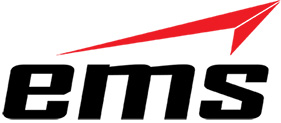The application of 3D scanning and 3D printing regarding science projects just took a leap back in time and brought the past to the present in modern day tech glory.
The McWane Science Center wanted to do a 3D scan and print of one of their fossils. EMS showed up and the rest is history, literally.
The fossil is estimated at 63 million years old. An egg in fact, and the science center wanted it reproduced without damaging it. In traditional fossil replication, what the general public sees when they go to a museum is a replica of the original fossil. This is so that the fossil isn’t damaged by the public and can be better preserved stashed away. Normally, a fossil is encased in rubber or silicone and then removed. Plaster or some other hardening substance is injected into the mold and a replica is created. Often painted and detailed afterward. This can take days or weeks to complete and sometimes months if the experts are employed and they can often be booked up for quite a while.
With 3D scanning, the fossil is scanned, that data is stored in the computer and the software can manipulate the image and prep it for printing. Then, using any number of materials, the 3D printer can print an almost exact duplicate of the original object. This process only takes a few hours at the most and the original object suffers no damage whatsoever.
Using this technology, the McWane Science Center recreated their fossil with no sweat.
It only took 30 minutes to scan the egg fossil with the Z Corp Z Scanner. It took 2 hours to print it with the Z Corp 3D printer. The center was so happy with the results they bought their own 3D equipment.
This isn’t’ the first time EMS has done some remarkable science, and has done some groundbreaking work in fossils before. Nowadays with ground penetrating radar and such other imaging technologies, the 3D scanners can capture that info, and print it making it unnecessary to excavate the fossil or make a replica instead of the time consuming and painstaking process of excavation.
This 3D scanning and 3D printing technology continues to fascinate and change the game of many industries and sciences. With scanning just one fossil, that info can be sent even by email to 3D scanners worldwide so that schools and other museums can have copies of valuable and historical objects for study.

